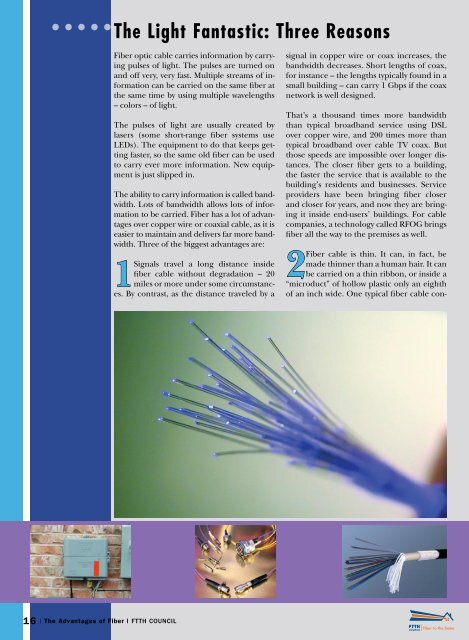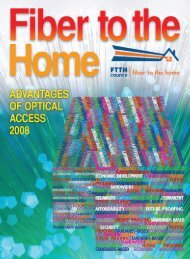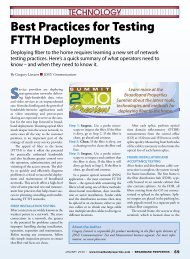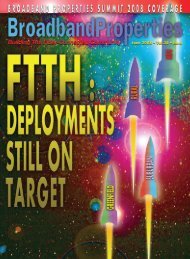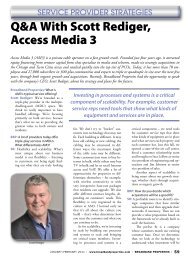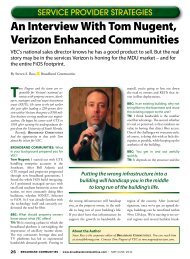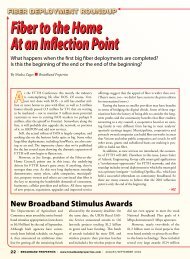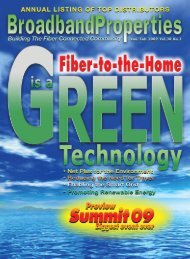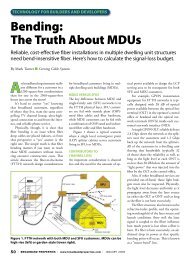Download - Broadband Properties
Download - Broadband Properties
Download - Broadband Properties
Create successful ePaper yourself
Turn your PDF publications into a flip-book with our unique Google optimized e-Paper software.
The Light Fantastic: Three Reasons<br />
Fiber optic cable carries information by carrying<br />
pulses of light. The pulses are turned on<br />
and off very, very fast. Multiple streams of information<br />
can be carried on the same fiber at<br />
the same time by using multiple wavelengths<br />
– colors – of light.<br />
The pulses of light are usually created by<br />
lasers (some short-range fiber systems use<br />
LEDs). The equipment to do that keeps getting<br />
faster, so the same old fiber can be used<br />
to carry ever more information. New equipment<br />
is just slipped in.<br />
The ability to carry information is called bandwidth.<br />
Lots of bandwidth allows lots of information<br />
to be carried. Fiber has a lot of advantages<br />
over copper wire or coaxial cable, as it is<br />
easier to maintain and delivers far more bandwidth.<br />
Three of the biggest advantages are:<br />
1Signals travel a long distance inside<br />
fiber cable without degradation – 20<br />
miles or more under some circumstances.<br />
By contrast, as the distance traveled by a<br />
signal in copper wire or coax increases, the<br />
bandwidth decreases. Short lengths of coax,<br />
for instance – the lengths typically found in a<br />
small building – can carry 1 Gbps if the coax<br />
network is well designed.<br />
That’s a thousand times more bandwidth<br />
than typical broadband service using DSL<br />
over copper wire, and 200 times more than<br />
typical broadband over cable TV coax. But<br />
those speeds are impossible over longer distances.<br />
The closer fiber gets to a building,<br />
the faster the service that is available to the<br />
building’s residents and businesses. Service<br />
providers have been bringing fiber closer<br />
and closer for years, and now they are bringing<br />
it inside end-users’ buildings. For cable<br />
companies, a technology called RFOG brings<br />
fiber all the way to the premises as well.<br />
2<br />
Fiber cable is thin. It can, in fact, be<br />
made thinner than a human hair. It can<br />
be carried on a thin ribbon, or inside a<br />
“microduct” of hollow plastic only an eighth<br />
of an inch wide. One typical fiber cable con-<br />
16 | The Advantages of Fiber | FTTH Council


